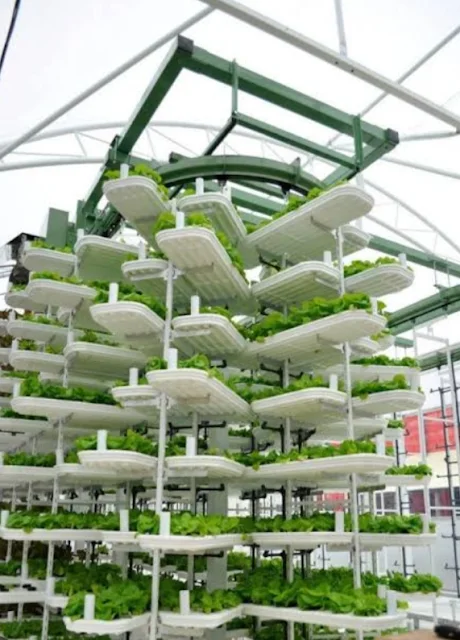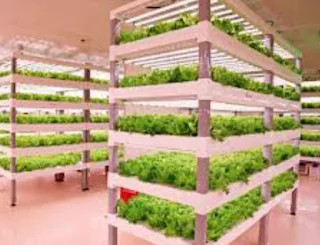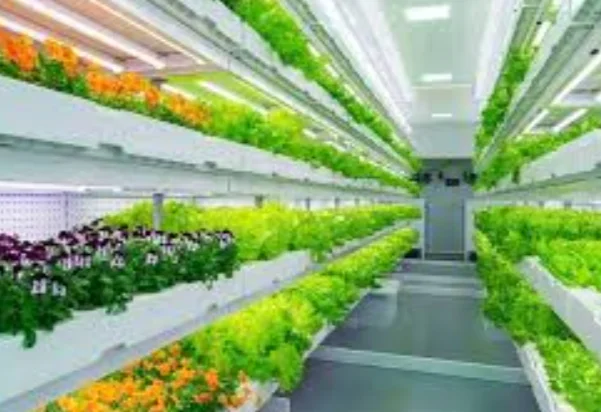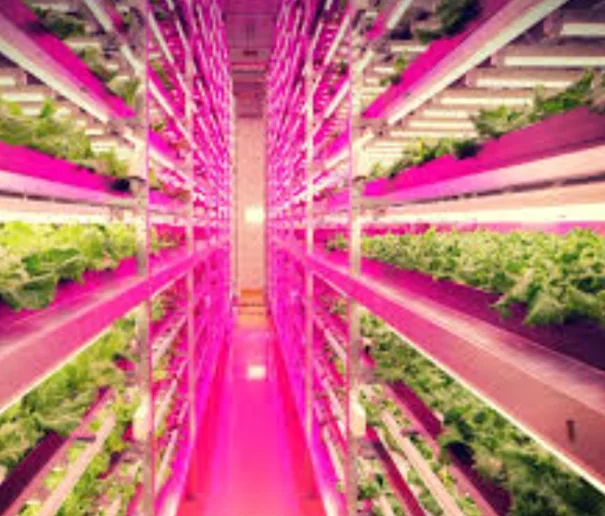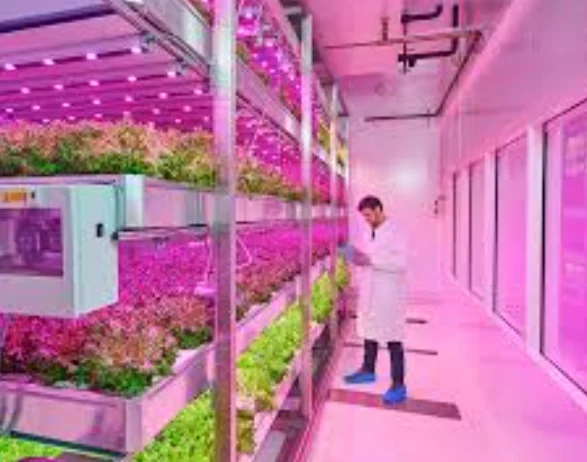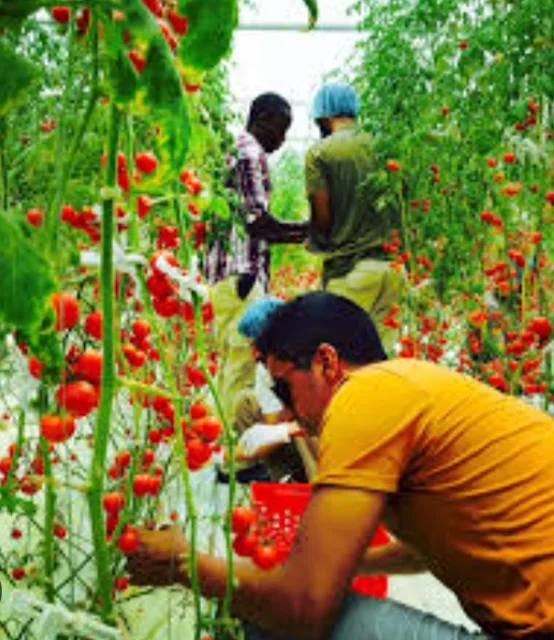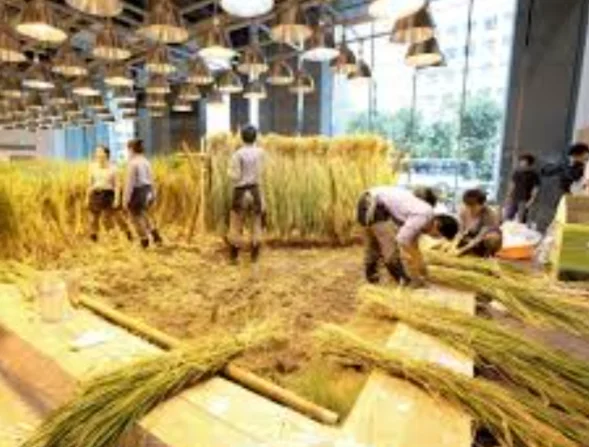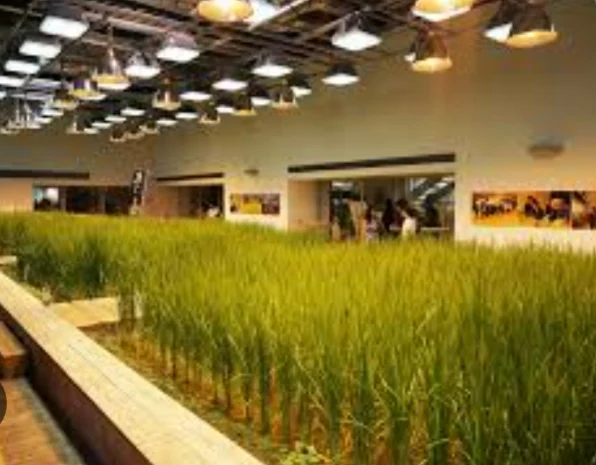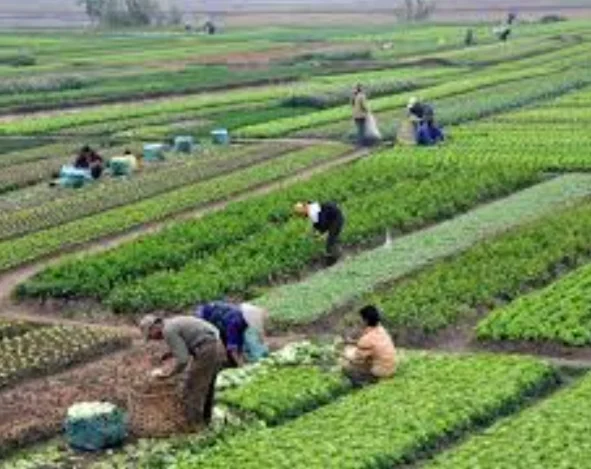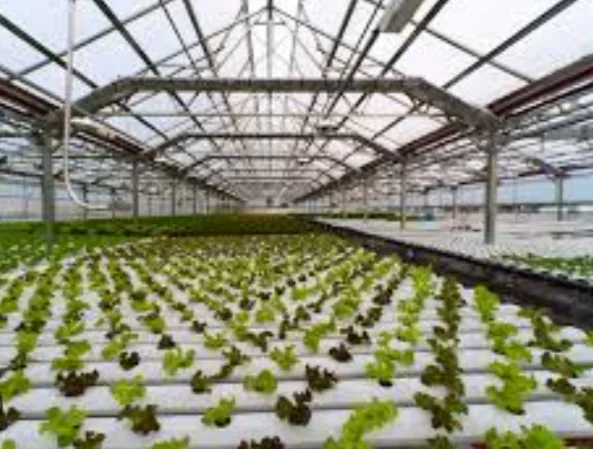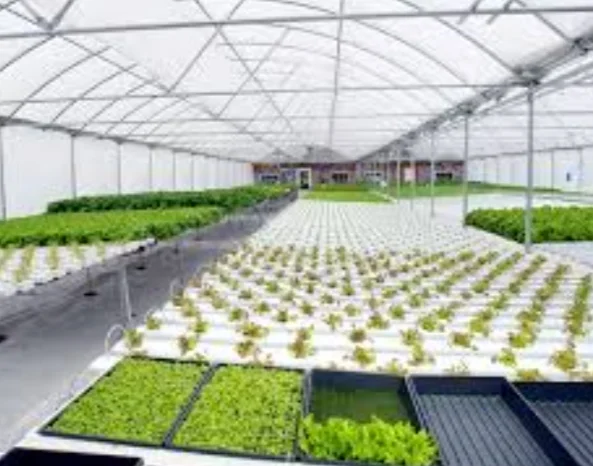Japan Modern Agriculture
Japan has successfully transformed its agriculture sector. Despite limited land and a challenging workforce situation, modern agriculture allows Japan to produce high-quality food while addressing its unique needs.
Why Japan Needs Modern Agricultural Approaches
- Limited Land: Japan has a relatively small amount of arable land compared to its population. This creates a need for highly efficient and productive farming methods.
- Expensive Labor: Labor costs in Japan are high, driving the need for automation and technological solutions to reduce reliance on manual labor.
- Consumer Demands: Japanese consumers have extremely high standards for quality, safety, and freshness in their produce. Modern techniques help meet these expectations.
- Aging Population: The average age of farmers in Japan is increasing. Modern agriculture, with its reliance on technology and automation, attracts younger generations to the field and eases the burden on older farmers.
How Modern Agriculture Works in Japan
- Smart Farming: Japanese agriculture extensively uses sensors, data analytics, and the Internet of Things (IoT) to make informed decisions. This means:
- Precision Agriculture: Tailoring inputs like water, fertilizer, and pesticides to the exact needs of specific crops and locations within a field, maximizing efficiency.
- Climate Control: Greenhouses and plant factories allow for year-round production regardless of weather conditions.
- Robotics and Automation: Japan is a global leader in robotics. In agriculture, this translates to robots for:
- Harvesting delicate or labor-intensive crops
- Autonomous weeding and pest control
- Sorting and packaging produce
- Focus on Sustainability: Japanese modern agriculture often emphasizes:
- Hydroponics and Aquaponics: These systems reduce water usage and minimize the risk of environmental contamination.
- Renewable Energy: Solar panels and other renewable energy sources power smart farms and vertical farming systems.
- Integrated Pest Management (IPM): Prioritizes natural pest control methods to reduce the need for chemicals.
Hystory of Japan Modern Agriculture
Here's a breakdown of the history of modern agriculture in Japan:
Meiji Period (1868-1912): Seeds of Change
- Westernization: Japan looked to the West for agricultural modernization, importing new technologies, crops, and livestock breeds.
- Agricultural Experiment Stations: The government established stations to research and promote improved farming techniques.
- Land Reform: Land reforms shifted land ownership to individual farmers, incentivizing production gains.
Early 20th Century: Growth and Challenges
- Advancements: Use of chemical fertilizers and early mechanization increased productivity.
- Colonial Expansion: Taiwan and Korea became major suppliers of rice to mainland Japan.
- Tensions: Peasant farmers struggled with debt and low rice prices, highlighting an unequal agricultural system.
World War II and Its Aftermath
- Disruption: The war severely disrupted food production and distribution.
- Land Reform Post-WWII: U.S. occupation forces enacted land reforms that further redistributed land, fostering greater equality among farmers.
- Economic Boom = Demand: Rapid industrialization spurred the demand for food, driving agricultural change.
1950s-1970s: The "Agricultural Miracle"
- Mechanization: Tractors, harvesters, and other machinery became widespread, reducing labor needs and increasing yields.
- Chemical Input Boom: Fertilizers and pesticides were heavily used, leading to significant productivity gains.
- Shift in Focus: Farmers moved towards high-value crops like fruits, vegetables, and livestock products to meet changing consumer demands.
1980s-Present: Challenges and Adaptations
- Trade Liberalization: Japan began importing more food products, increasing competition for domestic farmers.
- Aging Farmers: Japan struggled with a rapidly aging farming population and the issue of finding successors.
- Focus on Sustainability: Organic farming and environmentally friendly practices gained attention.
- Smart Agriculture: Japan started incorporating advanced technologies like precision farming, drones, and robotics into agriculture.
Current State of Modern Japanese Agriculture
- High-Tech & High-Quality: Japan is known for advanced farming techniques and producing premium quality fruits and vegetables.
- Self-Sufficiency Concerns: Japan remains heavily reliant on food imports, raising food security concerns.
- An Aging Industry: The future of Japanese agriculture depends on attracting younger generations to farming and maintaining innovation.
Key Statistical Data Table
| Metric | Value/Percentage | Explanation |
|---|---|---|
| Arable Land | ~12% of total land | Limited space drives focus on high-value crops like fruits, vegetables, and flowers. |
| Labor Force in Agriculture | ~1.7% of workforce | Aging population is a major challenge, prompting automation and innovation. |
| Average Farm Size | 3 hectares (7.4 acres) | Generally small farms due to limited land, leading to land consolidation efforts. |
| Dominant Crop | Rice | Still holds cultural and economic significance, but production is diversifying. |
| Technology Adoption | High | Widespread use of robotics, drones, precision agriculture, and AI for improved efficiency and yield. |
| Government Support | Significant | Subsidies, tax breaks, and policies to maintain the sector and encourage young farmers. |
| Self-Sufficiency Rate | 39% (2021) | Relatively low, necessitating food imports to meet domestic demands. |
| Export Focus | High-value products | Wagyu beef, fruits, and other specialty items command premium prices abroad. |
| Agricultural GDP | ¥8.6 trillion (2022) | Contributes about 1.1% to the national GDP. |
| Agricultural Research & Development | ¥242.4 billion (2022) | Significant investment in research to improve productivity, sustainability, and address challenges. |
Japan Modern Agriculture: Smart Farming
Let's dive into the fascinating world of smart farming in Japan:
Key Components of Smart Farming in Japan:
-
Sensors and Monitoring: Smart farms are equipped with an array of sensors to gather real-time data on:
- Soil moisture and nutrient levels
- Temperature and humidity within greenhouses or plant factories
- Light intensity and spectrum
- Plant health indicators (through cameras and image analysis)
- Weather conditions (to predict potential pest or disease outbreaks)
-
Data Analysis and AI: The vast amount of data collected is processed by powerful analytics tools and often with Artificial Intelligence (AI) algorithms. This helps farmers:
- Identify optimal growing conditions for specific crops.
- Detect early signs of stress, disease, or nutrient deficiencies.
- Make data-driven decisions on irrigation, fertilization, and pest control strategies.
-
Automation and Robotics: Smart farming systems integrate automation and robotics for various tasks:
- Precision irrigation and fertilization systems that deliver the exact amount of resources needed, where they are needed.
- Autonomous robots for tasks like harvesting, weeding, and crop scouting.
- Automated climate control systems within greenhouses or plant factories.
Benefits of Smart Farming in Japan:
- Increased Yields and Resource Efficiency: Smart farming optimizes every input, maximizing yields while reducing water, fertilizer, and pesticide use.
- Enhanced Quality: Precise control over growing conditions leads to consistently high-quality produce with desired traits.
- Reduced Labor Costs: Automation tackles labor-intensive tasks, offsetting the challenge of an aging farming population.
- Environmental Sustainability: Smart farming minimizes resource waste and potential for agricultural runoff.
- Adaptability: Smart farms can adjust quickly to changing weather or market demands.
Examples of Smart Farming in Japan:
- Spread Co.: A leader in large-scale indoor vertical farming, using AI and robotics for fully automated plant production.
- Farmnote: A cloud-based platform for farmers to collect and analyze data, make informed decisions, and track farm operations.
- Agri-Robo: A company developing agricultural robots for tasks like strawberry harvesting and pest monitoring.
Japan Modern Agriculture: Robotics and Automation
Japan Modern Agriculture: Robotics and Automation
Labor Shortages Drive Innovation:
Japan's agricultural sector faces a major challenge: a declining and aging workforce. This has fueled the adoption of robotic and automation solutions to address labor shortages and increase efficiency. Additionally, Japan's strong technological background and focus on high-value, delicate crops make it a prime ground for the development and utilization of agricultural robots.
Types of Robots and Automation:
- Harvesting Robots: These robots are designed to identify ripe fruits and vegetables using cameras and sensors, and then carefully pick them without causing damage. This is particularly important for delicate crops like strawberries, tomatoes, and cucumbers.
- Weeding Robots: Equipped with image recognition and AI, these robots differentiate between crops and weeds, allowing for targeted removal through mechanical means or precise application of herbicides.
- Autonomous Tractors and Field Robots: These machines handle tasks like soil preparation, planting, and crop management, significantly reducing the need for manual labor.
- Drones: Widely used for aerial crop monitoring, drones help identify areas of stress, allow for precise application of fertilizers and pesticides, and even assist with pollination in certain cases.
- Sorting and Packaging Robots: These robots utilize vision systems to assess product quality, sort by size or ripeness, and efficiently package goods for market.
Benefits of Robotics and Automation:
- Reduced Labor Dependency: Robots alleviate the pressure of a shrinking workforce, allowing farmers to manage larger operations with fewer workers.
- Increased Productivity: Automation allows tasks to be performed faster and with greater consistency compared to manual labor, leading to increased overall production.
- Precision Operations: Robots excel at delicate and precise tasks, ensuring the quality and consistency of high-value produce.
- Improved Worker Safety: Robots can take on dangerous or physically demanding tasks, creating a safer work environment for human laborers.
- 24/7 Operations: Unlike human workers, robots can work around the clock, maximizing production, especially in controlled environments like indoor farms.
Examples of Companies:
- Kubota: A leading manufacturer of agricultural machinery, including autonomous tractors and harvesting robots.
- Yanmar: Another major player in the industry, developing autonomous tractors and other agricultural robots.
- Yamaha Motor: Utilizing their expertise in robotics, Yamaha has developed robots for tasks like weed control and fruit thinning.
Robotics and automation are playing a crucial role in transforming the Japanese agricultural sector, addressing labor shortages, and increasing production while maintaining the high quality and safety standards associated with Japanese agriculture.
Japan Modern Agriculture: Hydroponics and Aquaponics
Here's a look at how hydroponics and aquaponics are integral elements of modern agriculture in Japan:
Why Hydroponics and Aquaponics are Popular in Japan:
- Limited Arable Land: These systems enable the cultivation of crops in spaces where traditional soil-based farming is impossible. This is crucial for Japan, where land availability is a major constraint.
- Urban Farming: Hydroponics and aquaponics are suitable for rooftop gardens, indoor spaces, and other urban environments, allowing for food production close to consumers.
- Controlled Environment: These systems offer precise control over nutrients, water, temperature, and light, optimizing plant growth and year-round production regardless of weather conditions.
- Water Conservation: Both systems are highly water-efficient, with water continuously recycled and reused, making them ideal in areas with limited water resources.
- Reduced Environmental Impact: Minimized fertilizer and pesticide use lower the risk of agricultural runoff into water systems.
Hydroponics in Japan:
- Types: Japan utilizes various hydroponic techniques, including:
- Nutrient Film Technique (NFT): Plants are grown in channels with a continuous flow of nutrient-rich water.
- Deep Water Culture (DWC): Plant roots are suspended in aerated, nutrient-rich water.
- Aeroponics: Plant roots are periodically misted with a nutrient solution.
- Crops: Common hydroponic crops in Japan include leafy greens, tomatoes, strawberries, herbs, and various other vegetables.
Aquaponics in Japan:
- System Design: Aquaponics combines aquaculture (fish farming) with hydroponics. Fish waste provides nutrients for the plants, while the plants help purify the water for the fish, creating a symbiotic system.
- Applications: Aquaponics is often used in small-scale and urban settings, raising fish like tilapia or carp, along with leafy greens, herbs, and vegetables.
Benefits for Japan:
- Increased food production: These systems allow for intensive cultivation within limited spaces, boosting yields.
- Fresh, local produce: Japanese consumers value freshness, and hydroponics/aquaponics enable local production that minimizes transportation.
- Sustainability: Reduced water usage and minimal environmental impact align with Japan's focus on sustainable agriculture.
Japan Modern Agriculture: Renewable Energy
Japan: Integrating Renewable Energy into Modern Agriculture
Japan is actively integrating renewable energy into its modern agricultural practices, aiming for greater sustainability and reduced reliance on traditional energy sources. Here's an overview of key approaches:
-
Solar Sharing: This innovative technique involves installing solar panels elevated above crops, allowing for partial shade while generating clean energy. Ideally suited for shade-tolerant crops, it also helps reduce water evaporation from soil. Japan actively promotes solar sharing to maximize land usage.
-
Agrivoltaics: Similar to solar sharing, agrivoltaics focuses on optimizing both crop yields and solar energy production. By carefully adjusting the spacing and height of panels, farmers can tailor sunlight access for healthy crop growth while maximizing energy output.
-
Solar-Powered Irrigation Systems: Replacing traditional diesel pumps with solar-powered ones significantly reduces the environmental impact of irrigation. These systems are particularly beneficial in remote areas where access to the power grid is limited.
-
Biomass Energy: Japan utilizes agricultural waste products like rice straw and livestock manure to generate biomass energy. This process converts waste into heat, electricity, or biogas, providing a sustainable source of power for farms and surrounding communities.
-
Geothermal Energy for Greenhouses: Japan's volcanic activity allows access to geothermal energy, used to heat greenhouses. This enables year-round crop production even in colder climates, reducing reliance on fossil fuels for heating.
Government Support and Challenges:
- The Japanese government offers subsidies and incentives to encourage the adoption of renewable energy in agriculture.
- A key challenge is the high upfront cost of some technologies. However, as costs decrease, adoption is expected to increase.
Benefits of Renewable Energy for Japanese Agriculture:
- Reduced Carbon Footprint: Contributes to Japan's climate change goals.
- Increased Energy Independence: Less reliance on imported fossil fuels.
- Cost Savings for Farmers: Lower energy bills over time.
- New Income Streams: Selling excess electricity back to the grid.
By embracing renewable energy, Japan demonstrates its commitment to a sustainable future for its agricultural sector, ensuring both environmental responsibility and long-term economic viability.
Japan Modern Agriculture: Integrated Pest Management (IPM)
Here's a breakdown of Integrated Pest Management (IPM) in Japan's modern agriculture:
Understanding IPM
IPM is a strategy that focuses on long-term prevention of pests and their associated damage through a combination of techniques. Japan utilizes a variety of IPM practices, including:
- Biological Control: Encouraging and introducing natural predators, parasites, and pathogens of pest insects to maintain acceptable population levels.
- Cultural Practices: Employing crop rotation, sanitation, and other farming practices that disrupt pest lifecycles and reduce their impact.
- Resistant Crop Varieties: Planting crops that have been bred to withstand or deter specific pests and diseases.
- Monitoring and Scouting: Regularly inspecting crops to identify pest problems early on, allowing for targeted intervention.
- Pesticides as a Last Resort: Carefully using pesticides only when other methods are insufficient and applying them in a way that minimizes risks to humans and the environment.
Historical Context and Evolution of IPM in Japan
- Japan has a long history of integrated pest management approaches, with concepts like "sougouboujo" developed as early as the 1930s.
- Modern IPM guidelines were established by the Japanese government in the 2000s to formalize practices and reduce reliance on chemical pesticides.
- Ongoing research focuses on further refining IPM strategies, especially for diseases caused by soilborne pathogens.
Current Initiatives and Challenges
- Checklist Systems: Japan has implemented IPM checklists based on government guidelines, helping farmers implement best practices.
- Reducing Pesticide Use: A key goal of IPM is to minimize the negative impact of pesticides on the environment and human health.
- Cost and Knowledge Barriers: Some IPM techniques might be more initially expensive or knowledge-intensive for farmers, presenting adoption challenges.
Benefits of IPM in Japanese Agriculture
- Improved Sustainability: IPM reduces reliance on pesticides, promoting a healthier environment and agricultural ecosystem.
- Long-Term Pest Control: IPM offers more effective long-term solutions compared to relying solely on pesticides, which can lead to pest resistance.
- Enhanced Food Safety: Reducing pesticide use minimizes chemical residues in agricultural products.
- Economic Benefits: Over time, IPM can lead to cost savings through lower pesticide expenses and improved crop yields.
The Future of IPM in Japan
Japan is likely to continue refining and expanding its IPM practices, with a focus on innovative biological control methods and technologies. The goal is to create a sustainable agricultural system that balances food production with environmental protection while ensuring the health and safety of consumers.
Japan Modern Agriculture: Product Diversification
Product Diversification in Japan's Modern Agriculture
Understanding Product Diversification
Product diversification in agriculture involves farmers expanding the variety of crops and livestock products they raise beyond traditional staples. This approach aims to:
- Mitigate risks: Reduce dependence on a single crop, lessening vulnerability to factors like price fluctuations and pests.
- Meet changing demands: Cater to consumer preferences for diverse and healthy diets, including fruits, vegetables, and value-added products.
- Increase income potential: Generate additional income streams by exploring new markets and high-value products.
Drivers for Diversification in Japan
- Shifting consumer preferences: Japanese consumers are increasingly seeking variety in their diets, incorporating more fruits, vegetables, and convenience foods.
- Trade liberalization: Increased competition from imported food has put pressure on Japanese farmers to differentiate themselves through unique and high-quality offerings.
- Food self-sufficiency goals: Japan aims to reduce reliance on imported food by diversifying domestic agricultural production.
- Revitalizing rural communities: Product diversification can create new economic opportunities and support the development of rural areas.
Examples of Product Diversification in Japan
- Premium fruits: Japan has established a reputation for meticulously cultivated luxury fruits like melons, grapes, and strawberries, often fetching high prices in the market.
- Vegetable and processed food diversification: Farmers are expanding their offerings beyond traditional vegetables, introducing jams, pickles, and sauces for a broader consumer base.
- Livestock product diversification: Wagyu beef, dairy products, and free-range eggs represent a shift from traditional pork and poultry production.
- Agri-tourism: Some farms are embracing new revenue streams by offering experiences like fruit picking, workshops on traditional food preparation, and farm stays, fostering connections with consumers.
Government Support for Diversification
- Subsidies and incentives: Financial assistance is provided to farmers who transition to new crops and adopt innovative technologies.
- Branding and marketing: Government initiatives promote regional agricultural specialties and highlight the unique qualities of Japanese products to enhance their appeal.
- Strengthening agricultural cooperatives: These cooperatives help farmers with collective marketing, processing, and distribution of diversified products, improving market access.
Challenges and Considerations
- Knowledge and skill development: Farmers transitioning to new products might require training and support to acquire the necessary skills and knowledge.
- Market access: Establishing distribution channels and securing buyers for new products can be challenging, especially for niche markets.
- Balancing tradition and innovation: Preserving cultural heritage linked to traditional staple crops while adapting to changing consumer preferences and market demands is crucial.
Looking Ahead: The Future of Diversification
Product diversification is a key strategy for ensuring the continued success of Japan's agricultural sector. Moving forward, we can expect further emphasis on:
- Sustainable practices: Integrating environmentally friendly approaches into diversified product lines.
- Niche market opportunities: Identifying and catering to specific consumer segments with unique preferences.
- Value-added products: Creating innovative products with greater consumer appeal and higher profit margins.
By embracing diversification and adapting to evolving market dynamics, Japanese agriculture can ensure its long-term viability and contribute to a vibrant and sustainable food system.
Japan Modern Agriculture: Technology Adoption
Here's a breakdown of technology adoption in Japan's modern agriculture:
Areas of Technology Adoption:
- Precision Farming: GPS, sensors, and data analytics allow farmers to precisely monitor and optimize crop growth conditions, manage inputs (like water and fertilizer) with accuracy, and make data-driven decisions.
- Robotics and Automation: Robots are used for tasks like weeding, harvesting, and milking, reducing labor needs and improving efficiency. This is particularly important in Japan given its aging farming population.
- Drones: Drones assist with aerial crop monitoring, pesticide application, and data collection, covering large areas quickly.
- Controlled Environment Agriculture: Indoor farming systems with LED lighting, hydroponics, and automated climate control optimize production year-round, even in challenging climates.
- Biotechnology: While not widespread due to public perception, Japan is researching gene-editing and other biotechnologies to develop disease-resistant and high-yielding crops suitable to its environment.
Drivers of Technology Adoption
- Aging Farmer Population: Technology helps address labor shortages and allows older farmers to continue working.
- High Labor Costs: Automation can offset the expensive cost of labor in Japan.
- Limited Arable Land: Advanced techniques maximize crop yields within the constraints of Japan's land resources.
- Government Support: Subsidies and programs encourage farmers to invest in technology and modernize their operations.
- Consumer Demand for Quality: Technologies help ensure produce consistency and traceability, essential for discerning Japanese consumers.
Examples of Technology Adoption
- Smart Greenhouses: Using sensors and climate control systems to optimize growing conditions for high-value crops.
- Strawberry Harvesting Robots: Delicate robots are being developed to pick strawberries without bruising them.
- Agricultural Drones: Employed for field mapping, targeted fertilizer application, and disease monitoring.
Challenges and Considerations
- High Cost: Implementing advanced technologies can be expensive for small-scale farmers.
- Technical Knowledge: Farmers require training to effectively utilize sophisticated technologies.
- Consumer Acceptance: Public perception of biotechnology and its applications can influence adoption.
The Future of Technology in Japanese Agriculture
Japan is likely to remain a leader in agricultural innovation. We can expect these trends:
- Increased Affordability: As costs of technology decrease, wider adoption is expected.
- Data-Driven Farming: The integration of artificial intelligence and machine learning will further optimize decision-making, resource allocation, and overall efficiency.
- Vertical Farming Expansion: Space-efficient indoor farming methods are likely to gain traction, especially around urban areas.
Japan's commitment to technology-driven agriculture aims to address critical challenges like its aging population and limited land resources. By harnessing innovation, the country positions itself for a sustainable and competitive agricultural future.
Japan Modern Agriculture: AI Implementation
Here's a breakdown of Japan's innovative AI implementation within its agricultural sector, including key applications and the impact this technology will have:
Addressing Challenges with AI
Japan's agriculture faces unique challenges that make AI implementation incredibly valuable:
- Aging Workforce: The majority of Japanese farmers are elderly, which leads to a declining workforce and a loss of agricultural knowledge.
- Labor Shortages: Recruiting sufficient laborers, especially for the more intensive aspects of farming, proves to be increasingly difficult.
- Limited Arable Land: Due to Japan's mountainous terrain, maximizing the yield from its limited agricultural land is crucial.
Key Applications of AI in Japanese Agriculture
- Precision Farming: AI-powered sensors, drones, and data analytics optimize irrigation, fertilization, and pest control. These methods minimize resource waste and maximize crop yields.
- Robotics and Automation: AI-controlled robots are automating labor-intensive tasks:
- Harvesting: Robots identify and pick ripe fruits and vegetables with incredible accuracy.
- Sorting and Packaging: AI systems assess produce quality and categorize them for packaging, reducing manual effort.
- Crop Monitoring and Disease Detection: AI analyzes images from drones to detect early signs of disease or stress. This helps farmers quickly intervene and prevent significant losses.
- Predictive Analytics: AI analyzes vast data sets on weather patterns, soil conditions, and historical yields to predict crop yields and market demand. This allows farmers to make more informed production and sales decisions.
The Future of Japanese Agriculture with AI
- Enhanced Productivity: Expect increased efficiency due to AI-optimized decision-making, resource management, and reduced labor requirements.
- Higher Crop Yields: Precision farming and AI-powered interventions ensure optimal plant health, increasing the yield from available land.
- Attracting a New Generation: Technological advancements may draw younger people back into agriculture, revitalizing this traditional sector.
- Food Security and Sustainability: AI plays a crucial role in enabling Japan to address food security concerns and promote sustainable agricultural practices.
Examples of Companies Leading the Way:
- Spread: A major player in vertical farming, using AI for optimal plant growth conditions in controlled environments. (https://www.spread.co.jp/en/)
- Agrist: Creator of an AI-powered cucumber harvesting robot, addressing labor shortages. (https://agrist.com/)
- Panasonic: Its tomato harvesting robot showcases the potential of AI in delicate crop picking.
Limitations to Keep in Mind
- Cost: AI systems often require significant upfront investment, which might be a barrier for smaller farms.
- Technical Expertise: Farmers may need additional training to effectively leverage AI tools.
- Data Bias: AI algorithms require high-quality data to avoid incorrect recommendations or biased decisions.
Japan is leading the world in innovative AI application within its agriculture sector. This holds the promise of securing food production, revitalizing the sector, and ensuring sustainability for generations to come.
Japan Modern Agriculture: Involvement Company
Here's a look at some of the key companies involved in modernizing Japan's agricultural sector, along with the areas they specialize in:
Large Technology Companies:
- Panasonic: A major innovator across several industries, Panasonic contributes to agriculture through:
- Smart Greenhouses: Automated environmental control systems for optimal plant growth.
- Harvesting Robots: Their advanced tomato-harvesting robots streamline this labor-intensive process.
- Fujitsu: Fujitsu focuses on data-driven optimization and precision farming:
- Akisai Food and Agriculture Cloud: An AI-powered platform analyzing vast amounts of data to provide actionable insights to farmers.
- NEC: NEC develops a variety of AI applications in agriculture:
- Crop disease diagnostics: Image analysis to identify diseases earlier.
- Livestock monitoring: AI systems to track livestock health and well-being.
Specialized Agri-Tech Companies:
- Spread: A pioneer in vertical farming technology:
- Techno Farm: Fully automated, indoor vegetable production facilities, maximizing space and yields.
- Agrist: Addressing labor shortages through automation:
- Cucumber Harvesting Robot: AI-powered for identification and delicate picking.
- Inaho: Precision farming focus:
- AI-powered satellite imagery analysis: Provides farmers with field-level crop health assessments.
Traditional Agricultural Companies Embracing Technology:
- Kubota: A major manufacturer of agricultural machinery integrating AI:
- Agrirobo Tractors: Autonomous tractors for various tasks.
- Smart farming solutions: Sensors and data analytics integrated into their equipment.
- Zen-Noh: A powerful agricultural cooperative at the forefront of technological adoption:
- Partnerships with startups: Collaboration with emerging agri-tech companies to drive innovation.
Government Initiatives:
- The Ministry of Agriculture, Forestry, and Fisheries (MAFF): MAFF promotes the 'Smart Agriculture' concept, providing funding and support to accelerate AI and technology adoption by companies and farms.
Important Notes
- This list is not exhaustive. Japan boasts a thriving agri-tech startup scene with many more innovative companies.
- Collaboration is key! Companies often partner, combining expertise to deliver comprehensive solutions.


